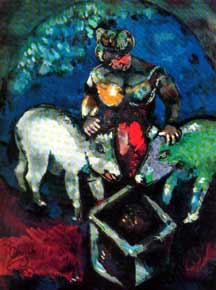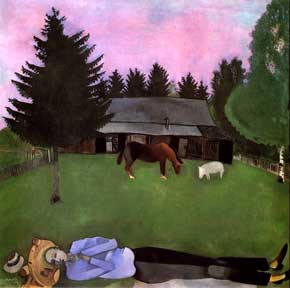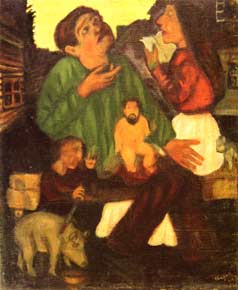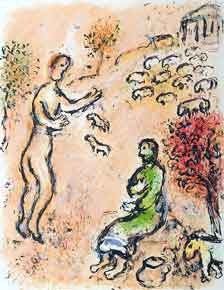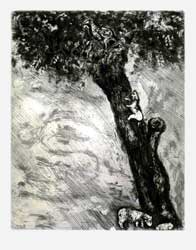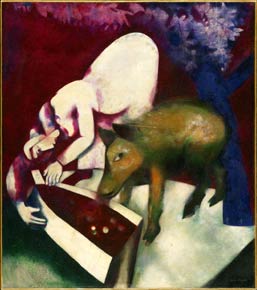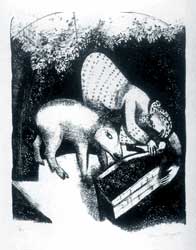Russian, (1887-1985)
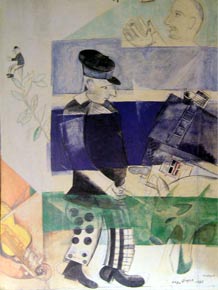
-
Detail of mural section, State Jewish Chamber Theatre in Moscow
- (1920), tempera, gouache and kaolin on canvas
- full mural section: 111.8 x 309.8 in. (284 x 787 cm.)
- The Tretyakov Gallery, Moscow
- full mural section
-
Editor’s Note:
In the 1920s Chagall created a series of murals for the lobby of the State Jewish Chamber Theatre in Moscow. His commission was to create a series of panels on the origins of various Jewish art forms. However, Chagall’s choice of specific subjects and the manner he choose depicted them within the murals were considered potentially incendiary for the theatre’s centerpiece and led to Chagall’s dismissal from the Moscow Yiddish Theatre’s employ.
The image of the man urinating on the pig is considered as Chagall’s commentary on a contemporary, the avant-gard gentile artist Kazimir Malevich and his exclusive faith in abstraction and militant modernism in art.
About the Artist
Marc Chagall, (1887 – 1985) was born Moshe Segal in Vitsyebsk, Russia (now in Belarus) in a family of Vitebsk Orthodox Jews. He internationalized his name to Marc Chagall while still in Russia. Chagall is recognized as one of the most significant painters and graphic artists of the 20th century, and is generally characterized as a Russian-born French painter and designer.
Chagall has been distinguished for his surrealistic inventiveness. His distinctive use of color and form is derived partly from Russian expressionism and was influenced decisively by French cubism. His work treats subjects in a vein of humor and fantasy that draws deeply on the resources of the unconscious.
Chagall’s personal and unique imagery include themes of vivid recollections of Russian-Jewish village life and treatments of Jewish subjects that combine recollection with folklore and fantasy. He also executed hundreds of biblical works and many prints illustrating literary classics. [DES-11/07]

